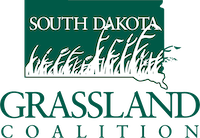Targeted grazing
A method of using livestock to obtain a certain set of vegetation objectives such as invasive species control, vegetational composition shifts, or wildfire fuel load reduction. Targeted grazing uses a prescription much like prescribed fire to achieve the desired outcome. Controlling stock density, timing, season of use, and using the right livestock species are key components of targeted grazing.
Recently, I attended a webinar sponsored by the Society for Range Management’s Targeted Grazing Committee highlighting two livestock producers working in Minnesota using virtual fencing to implement targeted grazing. Allysse Sorensen, Chief Executive Herder and co-owner of The Munch Bunch LLC, received a Sustainable Agriculture Research and Education (SARE) farmer/rancher grant FNC21-1306 “Testing Virtual Fence Technology in an Upper Midwestern Goat Grazing Operation”. Allysse uses Nofence, a virtual fence company from Norway, on her goat herd. She described how she used it in Minneapolis to target woody understory species like buckthorn in forests surrounding an urban university campus. Nofence uses cellular service technology to geolocate the virtual fence and the animals. Currently, Nofence is the only product available for sheep and goats. Her presentation was very good and received a lot of practical questions from the participants.
Doug Voss
A beef cattle operator from Paynesville, Minnesota started using a virtual fence system from Vence. Doug described his use of virtual fencing to graze the 30,000+ acre Sherburne National Wildlife Refuge. Virtual fencing allowed Doug to move his herd into difficult areas of the refuge which would not be feasible to graze using traditional electric fencing. His cattle were very effective in grazing the oak-savanna vegetation, keeping the understory vegetation in check.
Both producers described the costs of the two companies’ products and the pros and cons. The upfront costs might make getting into virtual fencing a challenge for some producers. Allysee and Doug said that they liked what virtual fencing offered in terms of convenience and knowing exactly where there animals were at all times. The systems are not 100% effective in keeping the animals in their paddock, but it was good enough to work the way they wanted it too. Both said they would never go back to using conventional temporary fencing.
It was clear from the webinar that there was a lot of excitement regarding what this new technology has to offer grazers. Like any new technology, the cost should decrease over time. Some issues of concern which still exists for many were the cybersecurity of the system and who owns these data? Regardless, it appears that virtual fencing can work and has great potential to support targeted grazing.
If you wish to watch the recorded webinar use this link.
Source: SDGC Newsletter
